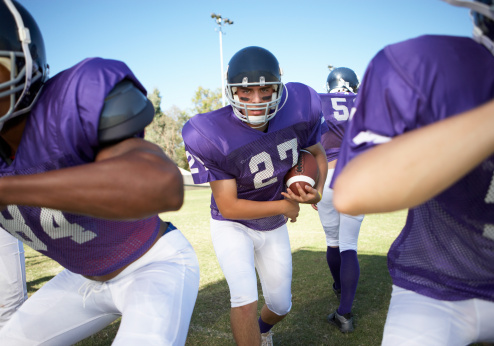Practice could be more dangerous than the game

These days, it’s hard to talk about football without also talking about concussions.
Some studies have revealed the frequency of head injuries in youth football and their possible long-term effects. Others have concluded that young athletes are often rushed back into play too soon, if they report their injuries at all.
According to new data from researchers at the Datalys Center for Sports Injury Research and Prevention, Inc., young athletes are more likely to get concussions during practice than they are during games.
The study examined more than 200 youth football programs for two seasons. Overall, they found 1,200 reported concussions. Within high school and college programs, 58 percent of concussions happened during practices.
“All sports have an element of risk,” says Dr. Doré DeBartolo, sports medicine physician at Advocate South Suburban Hospital in Hazel Crest, Ill. “Fortunately, we have studies like this to provide valuable information about how we can lower these risks as much as possible. If we know that concussions are more likely during practices, we can look for ways to make practices safer.”
Despite growing public concern about safety and injury, professional football continues to hold the top spot as America’s favorite sport and young athletes continue to play. In 2014, 3 million youth, 1.1 million high school and 100,000 college athletes played organized football.
“As physicians, educators, coaches and parents, it’s up to us to continue to advocate for safer sports,” says Dr. DeBartolo. “Increased awareness is a good start, but we need to take an active role in prevention, as well.”
Dr. DeBartolo suggests five ways to make sports safer:
- Insist that safety comes first. Make sure your organization or school has an adequate concussion policy in place and become familiar with it.
- Train athletes in proper blocking and tackling. Not all training has to involve player-to-player contact.
- Make sure athletes use proper equipment at all times. Protective gear should fit correctly and be well-maintained.
- Know the signs and symptoms of a concussion. They can include dizziness, drowsiness, feeling “foggy,” headache, irritability, nausea, memory problems, and more. Note that not all concussions cause a loss of consciousness. If unsure, don’t hesitate to seek medical care.
- If in doubt, sit them out. No game is worth an athlete’s health and well-being.
The Heads Up program from the Center for Disease Control and Prevention offers additional resources and training about sports-related brain injuries for both parents and young athletes.
Related Posts
Comments
2 Comments
About the Author
health enews staff is a group of experienced writers from our Advocate Health Care and Aurora Health Care sites, which also includes freelance or intern writers.


















While I completely agree that sport-related brain injuries need to be taken seriously, I do not believe that the data provided gives an accurate depiction of the when injuries are more likely to occur. While 58% of the injuries occur during practice, it also should be noted that the volume of practices is greater than the number of games. For each game, there may be 4 or more practices. Taken into consideration, practices actually issue less of a threat to the athlete than the game itself. The higher percentage can attributed more to an increase in opportunity than the act itself. Proportionally, games still present a higher risk to the athlete.
Ed, you make a valid point. More practices = more opportunity for injury.
The study authors address this with an insightful comment in the press release, the last line being most relevant:
“The rate of concussion in youth players was generally not different from those in high school and college players compared with other injuries. However, football practices were a major source of concussion at all three levels of competition. Concussions during practice might be mitigated and should prompt an evaluation of technique and head impact exposure. Although it is more difficult to change the intensity or conditions of a game, many strategies can be used during practice to limit play-to-player contact and other potentially injurious behaviors.”
We have little control over the course of a game, but we have full control over practices. How drills are run, how hard athletes are pushed, how much player-to-player impact is made, etc.
Even given the high number of practices — perhaps ESPECIALLY because of the high number of practices — it is VERY troubling that we are pushing kids so hard in training that they are getting brain injuries outside of actual competition.